Gardening experts name the best living fence plants for your backyard
The best living fence plants will help make your backyard more private and are great for wildlife
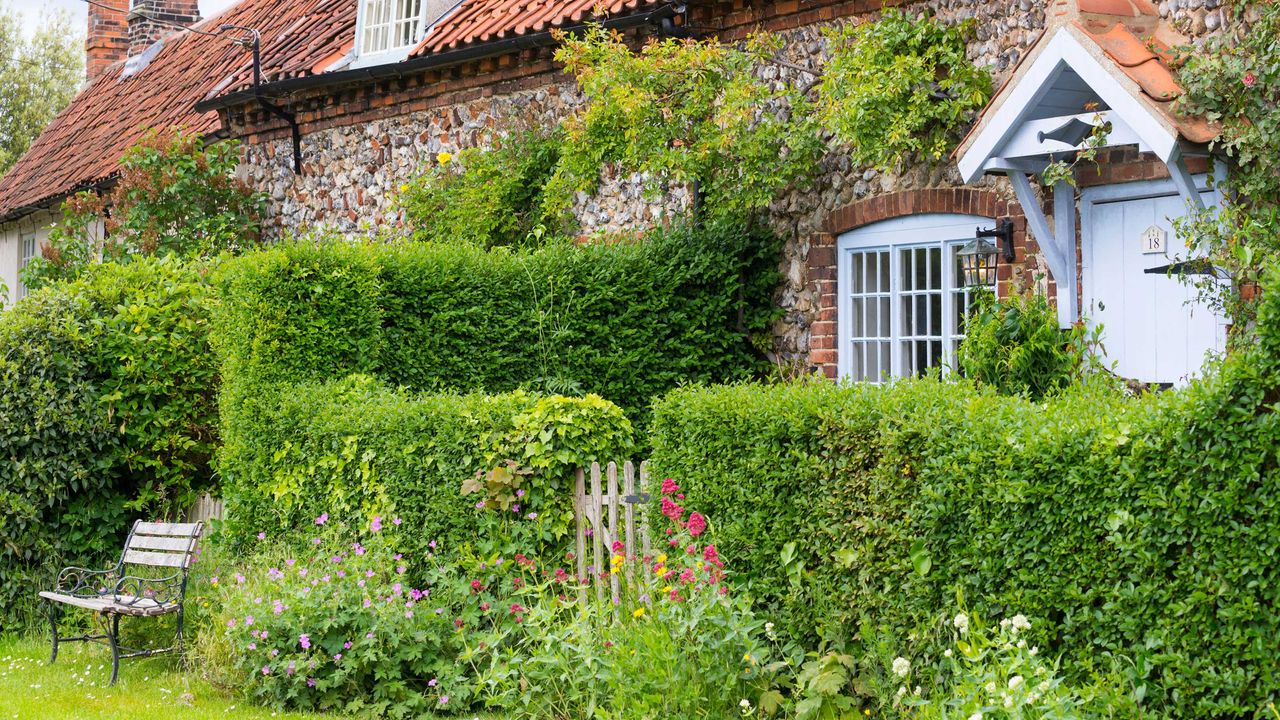
The best living fence plants can do so much for a backyard – increase privacy, support wildlife, and enhance your planting scheme, all without the use of costly fencing materials.
We've asked gardening professionals to name their favorite plants when making an easy living wall as a boundary – they're all evergreen, tough, and look great in any setting.
The best living fence plants: 5 top picks
Whether you want to line the perimeter of your plot or divide outdoor zones, these leafy suggestions will come in handy.
1. Arborvitae (thuja)
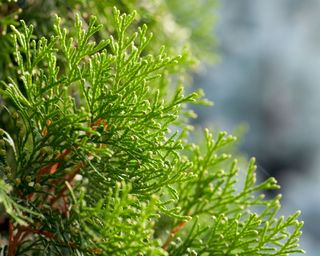
These tall evergreen shrubs are one of the best living fence plants for a reason. Also known as thuya or thuja, these coniferous plants with thick, evergreen foliage can be styled in a variety of ways to suit your garden design ideas.
Heidi Franquelli, plant expert at Platt Hill Nursery, explains their appeal. 'The foliage remains dense all year, giving relief from wind, noise, sun, and cold weather while giving a beautiful visual buffer,' she says. 'The thick coverage and small cones also provide a four-season habitat for nesting birds – making your yard more comfortable for you and the wildlife.'
Heidi's favorite varieties are:
- 'Green Giant': 'This variety grows at a fast rate, roughly 3' per year, and reaches maturity at 30'–50' in height – doubling as a shade tree as well as a screening shrub. It has a natural pyramidal shape and responds well to shearing.'
- 'Mission': 'This arborvitae stands at a slightly smaller height of 15'–20' at maturity. It boasts a slightly rounder but still pyramidal shape, with darker leaves than "Green Giant".'
- 'Emerald Green': '10'–20' when fully grown, "Emerald Green" forms a perfect screen when grown together in a row. It also makes a beautiful stand-alone tree in your landscape.'
2. Privet
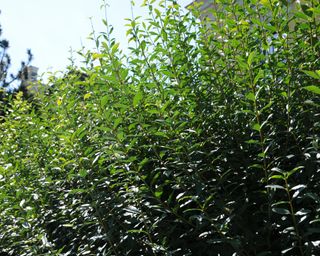
This may not be the most unusual choice as a natural alternative to garden fence ideas, but privet is just a very useful, hardworking green fence plant that has been used for this purpose for centuries. Heidi says: 'The leafy bushes easily shelter a yard and can be shaped into smooth, manicured hedges, if desired.'
She recommends the following varieties to try:
- 'Straight Talk': 'If grown together in a row, the upright branches of this privet form a leafy fence. When pruned, they weave into a dense hedge. If unpruned, they'll reach 10–12 feet in height.'
- 'Golden Ticket': 'This privet features golden-green leaves compared to the emerald green of "Straight Talk", with all the same features described above. They grow 4'–6' high at maturity with a similar spread.'
- 'Cheyenne Common': 'Another stalwart of shade and privacy, this hardy shrub grows 15' tall at maturity but can be pruned to your desired height, like other privets. It grows a solid wall of greenery during the growing season and remains a dense fence of branches during the winter.'
3. Bamboo
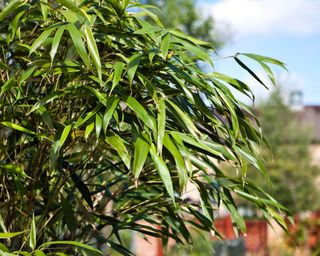
Perfect when used as part of Japanese garden ideas, bamboo has much to recommend itself as a living fence plant.
It is fast-growing, so suitable for covering a large area quickly. There are many varieties to choose from, and many grow well in shady conditions. Harry Williams, gardening expert and CEO of GrowReporter, gives bamboo his seal of approval: 'just give it some time and you can experience a lush and unique living fence in your own backyard. However, some varieties of this plant are invasive so make sure to plant the slow-spreading and clumping variety.
'Also, consider planting it in a large raised planter so you can control the quick growth. Another good thing about bamboo is it is adaptable and can grow even in fairly poor soils.'
Harry does caution that you will need to choose an evergreen variety if you live in an area with cold winters. 'If you are living in an area that experiences extreme winter conditions, bamboos could easily die if the variety you planted is not suited to the climate,' he says. 'But, if you like bamboos, consider the evergreen variety because it can stand the cold weather.' Asking at your local plant nursery is your best bet.
4. Yew
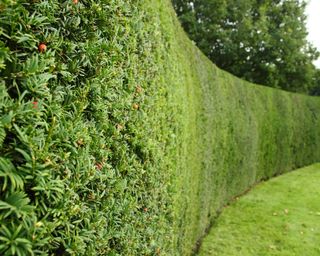
Yew trees are an excellent choice for those who are looking for garden privacy ideas. Yew grows dense and thick and is an evergreen plant. Just be aware that female yew trees have highly poisonous berries that need to be kept out of reach of children and pets.
Adam Crouch, Gardener and Founder of SproutRite.com, says, 'yew can grow well and survive in most environments. Depending on the variety chosen, they grow to be roughly 8–12 feet high, which is ideal for a living wall. They also have a relatively slow growth rate, which can reduce the amount of maintenance required. Their appearance is largely unchanged throughout the year, which is a bonus.'
5. Holly
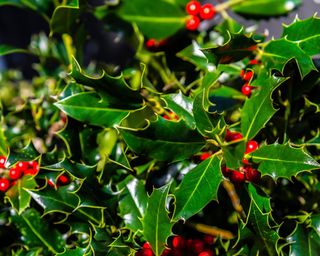
A tough evergreen, holly has attractive, glossy leaves that make a perfect living fence. Not all hollies are the best choice for living fences, however, because some grow very tall and can be difficult to contain.
If in doubt about the variety to choose, go for holly 'Little Red', as recommended by Gena Lorraine, a gardening specialist working for Fantastic Services. '"Little Red" holly is compact in size (5x5 feet/2x2 meters) and has a dense growth habit, making it a good choice for natural fencing,' she says.
'These evergreen shrubs produce gorgeous red berries and have a moderate growth rate. "Little Red" holly responds well to pruning, which lets you sculpt a beautiful hedge out of it. Hollies also make perfect screens around pools, not having to clean needles or leaves.' So, if you're looking for a living fence as part of your backyard pool ideas, this should be your top choice.
Anna writes about interior design and gardening. Her work has appeared in Homes & Gardens, Livingetc, and many other publications. She is an experienced outdoor and indoor gardener and has a passion for growing roses and Japanese maples in her outside space.
